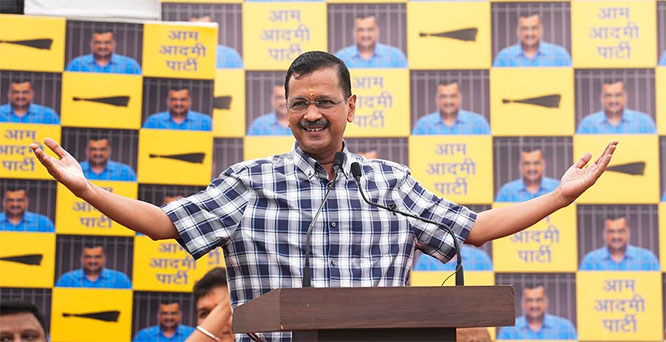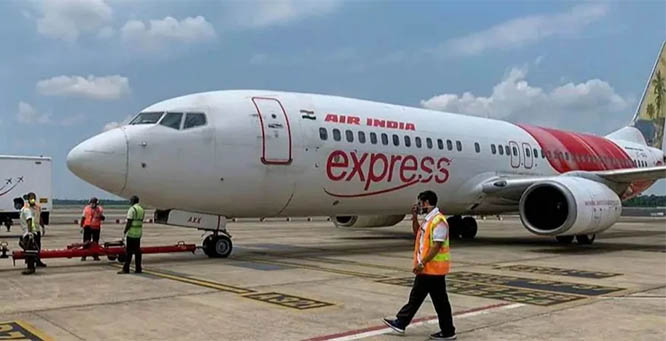New Delhi, August 30: While lauding police efforts in apprehending gunman Ajmal Kasab alive during the 26/11 attacks in Mumbai, the Supreme Court on Wednesday said “the deception, the falsehood that the terrorists were Indian Muslims coming from Hyderabad connected with some fictitious organisation called Mujahideen, Hyderabad Deccan, is one of the most ominous and distressing parts of the conspiracy.”
A Bench of Justices Aftab Alam and C.K. Prasad said, “If the appellant [Kasab] had not been caught alive and the investigating agencies had not been able to unravel the conspiracy fully and in all its devious ways, the terrorists might have passed [off] as Indian Muslims and that would have led to devastating short-term and equally debilitating long-term consequences. It would have caused… distrust and suspicion between communities and disturbed the communal peace and harmony of the country. It is not impossible that conflagrations would have erupted in different parts of the country, which the governments would have found difficult to contain.”
The Bench said: “In this regard, the selection of the CST [Chhatrapati Shivaji Terminus] as one of the targets for carnage assumes great importance. Trains leave for many parts of the country from the CST. Thus, as news of the carnage spread across the country through the media, travellers would start arriving in different parts of the country, some having lost their near and dear ones at CST, some with a wounded companion and others shell-shocked by the experience of a terrorist attack on the railway station. Their first-hand, eyewitness accounts of the carnage, added to reports in the print media and visuals in the electronic media, could be highly inflammatory and could easily evoke communal violence that would be difficult to contain.”
The Bench said the deception was “ominous because it aimed at destabilising Indian society and its governments. But it was equally distressing for being so deeply untruthful. Indian Muslims may have a long list of grievances against the establishment. Some of the grievances may be fanciful, some may be of their own making and some may be substantive. Nevertheless, no Indian Muslim would even think of venting his grievance like an animal, killing, maiming and wounding innocent people, his own countrymen. This is because he is not only loyal to his faith and community but equally loves his country and fellow countrymen.
“The case presents the element of previous planning and preparation as no other case. For execution of the conspiracy, the appellant and the nine other dead accused, his accomplices were given rigorous and extensive training as combatants. The planning for the attack was meticulous and greatly detailed. The route from Karachi to Mumbai, the landing site at Mumbai, the different targets at Mumbai were all predetermined.”
The court said: “All the terrorists, including the appellant, actually acted according to the previous planning. A channel of communication between the attacking terrorists and their handlers and collaborators from across the border, based on advanced computer technology and procured through deception, was already arranged and put in place before the attack was launched. We are unable to accept the submission that the appellant was a mere tool in the hands of the Lashkar-e-Taiba. He joined the LeT around December 2007 and continued as its member till the end, despite a number of opportunities to leave it. This shows his clear and unmistakable intention to be a part of the organisation and participate in its designs. Even after his arrest he regarded himself as a ‘watan parast’, a patriotic Pakistani at war with this country.”
“The saddest and most disturbing part of the case,” the Bench said, “was that the appellant never showed any remorse for the terrible things he did.”
It rejected the charge that the confession of Kasab was not voluntary and it could not be accepted. “As for his knowing the names of many people in LeT, their respective positions in the hierarchy and their roles in the organisation, again there is nothing unusual about it. It is to be noted that the appellant was not a mercenary hired for the operation. He was a highly committed and devoted member of the organisation and, therefore, there is nothing strange or wrong in his coming to know many people in the organisation during the course of his training. Further, it is to be kept in mind that his being caught alive was not part of the plan of the handlers.”
No rights violation
In view of these facts, the Bench said, “We are firmly of the view that there is no question of any violation of any of the rights of the appellant under the Indian Constitution.”
On the acquittal of Fahim Ansari and Sabauddin Ahamed, who had been linked with the 26/11 attacks, the Bench said: “We are in full agreement with the reasons assigned by the trial court and the High Court for acquitting the two accused of all the charges. The view taken by the trial court and the High Court is not only correct but on the facts of the case, that is the only possible view.”








Comments
Add new comment